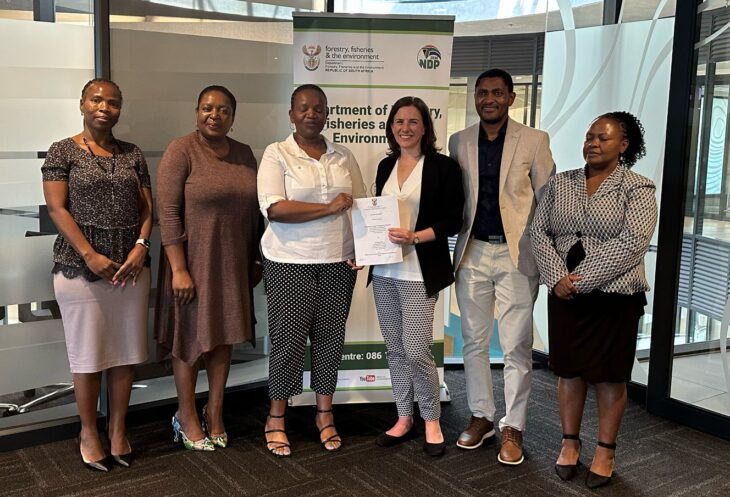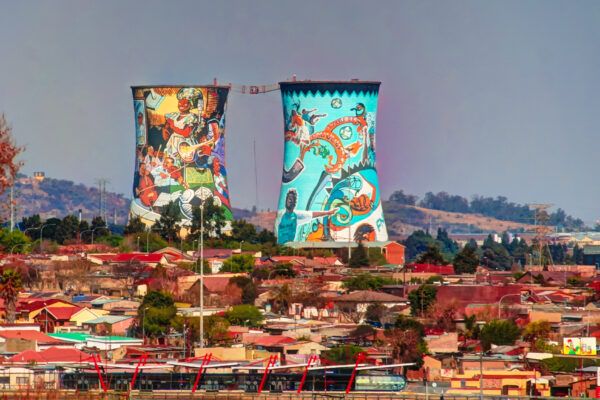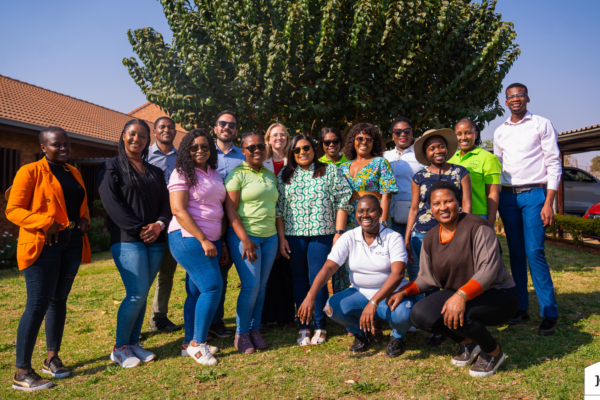Air pollution in South Africa
Air pollution was responsible for 25,800 premature deaths in South Africa in 2019. The country had the fourth highest number of deaths linked to particulate matter pollution (PM2.5) in Africa. Nearly 100% of the population breathes air that exceeds the World Health Organization’s (WHO) guideline levels.
In 2022, a judgement by the South African High Court recognised that the poor air quality in the Highveld Priority Area (HPA) breaches citizens’ constitutional right to an environment that is not harmful to their health and wellbeing. In this area, low-income communities and informal settlements are most impacted by poor air quality, as many live near industrial plants or mines.
South Africa is the twelfth largest emitter of greenhouse gas in the world. Most emissions are produced by the electricity sector, the metals industry and the transport sector. The electricity sector’s heavy reliance on fossil fuels is a primary cause of the high levels of nitrous oxide and sulphur dioxide (SO2), making South Africa the largest emitter of harmful SO2 gas associated with asthma and chronic bronchitis on the continent .
One of the country’s hotspots is Johannesburg, the largest city and economic capital, which is projected to attain official megacity status of 10 million by 2030. It is the richest city in Africa in terms of GDP per capita and often described as the economic powerhouse of the continent.
The government’s regulated air quality standards (known as Minimum Emissions Standards or MES) require all regulated industries to meet standards that are not harmful to people and the environment. But the government does not ensure adequate and appropriate compliance with MES, according to reports.
Air quality monitoring stations are not evenly distributed, leaving 40% of the population without access to a station within 25 kilometres. This inaccessibility of data prevents communities and authorities charged with managing environmental health from delivering evidence-based action.
South Africa is rapidly urbanising, like much of Africa. In Johannesburg alone, $640 million (R12 billion) could be saved if the city implements clean air measures from 2023-2040, which equates to 36% of the South African government’s total budget for HIV and HIV/TB health outcomes in 2019, according to our report. There is an opportunity to support policymakers and businesses to implement policies and solutions to tackle the root causes of air pollution now.
Tackling South Africa’s air pollution crisis
Since 2023, we’ve been working with government, civil society organisations and academic institutions in South Africa.
A locally-led and sustainable approach will help us to accelerate systemic change in a continent bearing the brunt of the climate crisis. We are engaging with city and national leaders, community groups and academic institutions to better understand the prevalence and impact of air pollution, and advocate for solutions. With South Africa assuming the G20 Presidency for 2025, the country has the chance to show leadership on this important challenge on the global stage.
Vumile Senene, Country Lead for South Africa at Clean Air Fund
We’re supporting environmental justice NGO, groundWork, to engage with communities and build awareness of air pollution in the three National Air Quality Priority Areas. The South African Medical Research Council is generating localised evidence to understand the impact of air pollution on health.
The University of Pretoria and Zabcor are going to be deploying low-cost sensors to inform government action. We also signed a Collaboration Agreement with the Department of Forestry, Fisheries and the Environment (DFFE) aimed at strengthening efforts to improve air quality management across the country.

Johannesburg is one of 14 cities in our Breathe Cities initiative. The city is benefitting from technical support, community engagement, capacity building and additional support from the global urban air quality initiative. The programme is supporting young people at the SAIIA to mobilise campaigns to inform policy and decision making. We’re also working to strengthen air quality data through a comprehensive source apportionment study, and working with partners like ICCT to deliver the first real-world emissions testing for the Johannesburg.
We funded the UrbanBetter Cityzens for Clean Air Campaign, which supported young runners to gather data on air pollution and campaign for clean air measures in Cape Town. We also collaborated with Climate Visuals to launch a new collection of free photographs to authentically portray the communities most impacted by dirty air in Johannesburg and the Highveld region.
Photo: Roadside fruit and vegetable sellers outside a market Johannesburg, South Africa. Credit: Gulshan Khan/Climate Visuals

